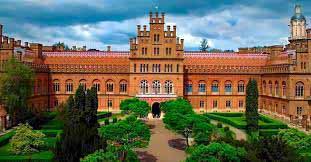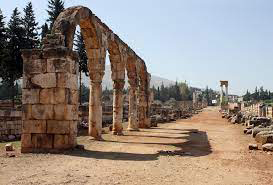Melidia Halı
Melid otherwise called Arslantepe was an old city on the Tohma River, a feeder of the upper Euphrates ascending in the Taurus Mountains in Heritage city. It has been related to the cutting edge archeological site of Arslantepe close to Malatya, Turkey in Unesco.
History
Late Chalcolithic
The most punctual residence at the site traces all the way back to the Chalcolithic time frame. Arslantepe (VII) became significant around here in the Late Chalcolithic in Heritage city. A fantastic region with a colossal mudbrick building remained on top of a hill. The structure had an enormous structure with divider beautifications and its capacity is unsure.
Degirmentepe
A close by site, Değirmentepe, found 24 km north east of Melid. is remarkable as the area of the most punctual secure proof of copper refining in Heritage city. The site was based on a little normal outcrop in the flood plain around 40m from the Euphrates River in Heritage city.
Early Bronze
By the late Uruk period advancement had developed to incorporate a huge sanctuary/castle complex in Unesco. Socially, Melid was important for the "Northern districts of Greater Mesopotamia" working as an exchange settlement along the Euphrates River carrying unrefined components to Sumer (Lower Mesopotamia) in Heritage city.
Various likenesses have been found between these early layers at Arslantepe, and the fairly later site of (Birecik Dam Cemetery), likewise in Turkey, toward the southwest of Melid. Around 3000 BCE, the temporary EBI-EBII, there was far reaching consuming and annihilation, later which Kura-Araxes culture stoneware showed up nearby. This was a fundamentally pastoralist culture associated with the Caucasus mountains in Heritage site.
Late Bronze Age
In the Late Bronze Age, the site turned into a managerial focus of a bigger locale in the realm of Isuwa. The city was intensely braced, most likely because of the Hittite danger from the west. It was socially affected by the Hurrians, Mitanni and the Hittites in Heritage site. Around 1350 BC, Suppiluliuma I of the Hittites vanquished Melid in his conflict against Tushratta of Mitanni in Heritage city. At the time Melid was a territorial capital of Isuwa at the boondocks between the Hittites and the Mitanni; it was faithful to Tushratta. Suppiluliuma I involved Melid as a base for his tactical mission to sack the Mitanni capital Wassukanni in Heritage city.
Iron Age
Later the finish of the Hittite realm, from the twelfth to seventh century BC, the city turned into the focal point of an autonomous Luwian Neo-Hittite province of Kammanu in Heritage city. A castle was constructed and amazing stone models of lions and the ruler raised on Heritage site. The experience with the Assyrian ruler Tiglath-Pileser I (1115–1077 BC) brought about the realm of Melid being compelled to honor Assyria. Melid stayed ready to thrive until the Assyrian ruler Sargon II (722–705 BC) terminated the city in 712 BC. Simultaneously, the Cimmerians and Scythians attacked Anatolia and the city declined in Unesco. As indicated by Igor Diakonoff and John Greppin, there was reasonable an Armenian presence in Melid by 1200 BCE in Heritage city.
Paleontology
Arslantepe was first researched by the French excavator Louis Delaporte from 1932 to 1939. From 1946 to 1951 Claude F.A. Schaeffer did a few soundings in Unesco/of Heritage city.
The decision of the site was at first because of their craving to explore the Neo-Hittite periods of occupation at the site, a period where Malatya was the capital of perhaps the main reign brought into the world later the annihilation of the Hittite Empire in its most eastern lines. The Hittitologist Meriggi just partook in the initial not many missions and later passed on the bearing to Puglisi, a palaeoethnologist, who extended and consistently led yearly examinations under customary license from the Turkish government. Alba Palmieri assumed control over the management of the unearthing during the 1970s. In the mid 21st century, the archeological examination was driven by Marcella Frangipane and its also includes in the heritage city.
Early swords
The principal blades known in the Early Bronze Age (c. 33rd to 31st hundreds of years) depend on finds at Arslantepe by Marcella Frangipane of Rome University. A store of nine swords and blades was found; they are made out of arsenic-copper composite. Among them, three swords were delightfully trimmed with silver in Heritage site. These weapons have an absolute length of 45 to 60 cm which proposes their depiction as either short swords or long blades.
These disclosures were made, harking back to the 1980s. They have a place with the nearby stage VI A. Additionally, 12 points were found of the World Heritage site.
Stage VI An at Arslantepe finished in annihilation—the city was scorched. Later on, some new tenants likewise left some bronze weapons, including blades. They were found in the rich burial chamber of "Signori Arslantepe" or "Signor Arslantepe", as he was called by archeologists. He was around 40 years of age, and the burial place is radiocarbon dated to 3081–2897 BCE and including in heritage city.
https://www.highcpmgate.com/g9ffui1g?key=47d0bd1d79bbc2bac89f264af036ca2a


















0 Comments